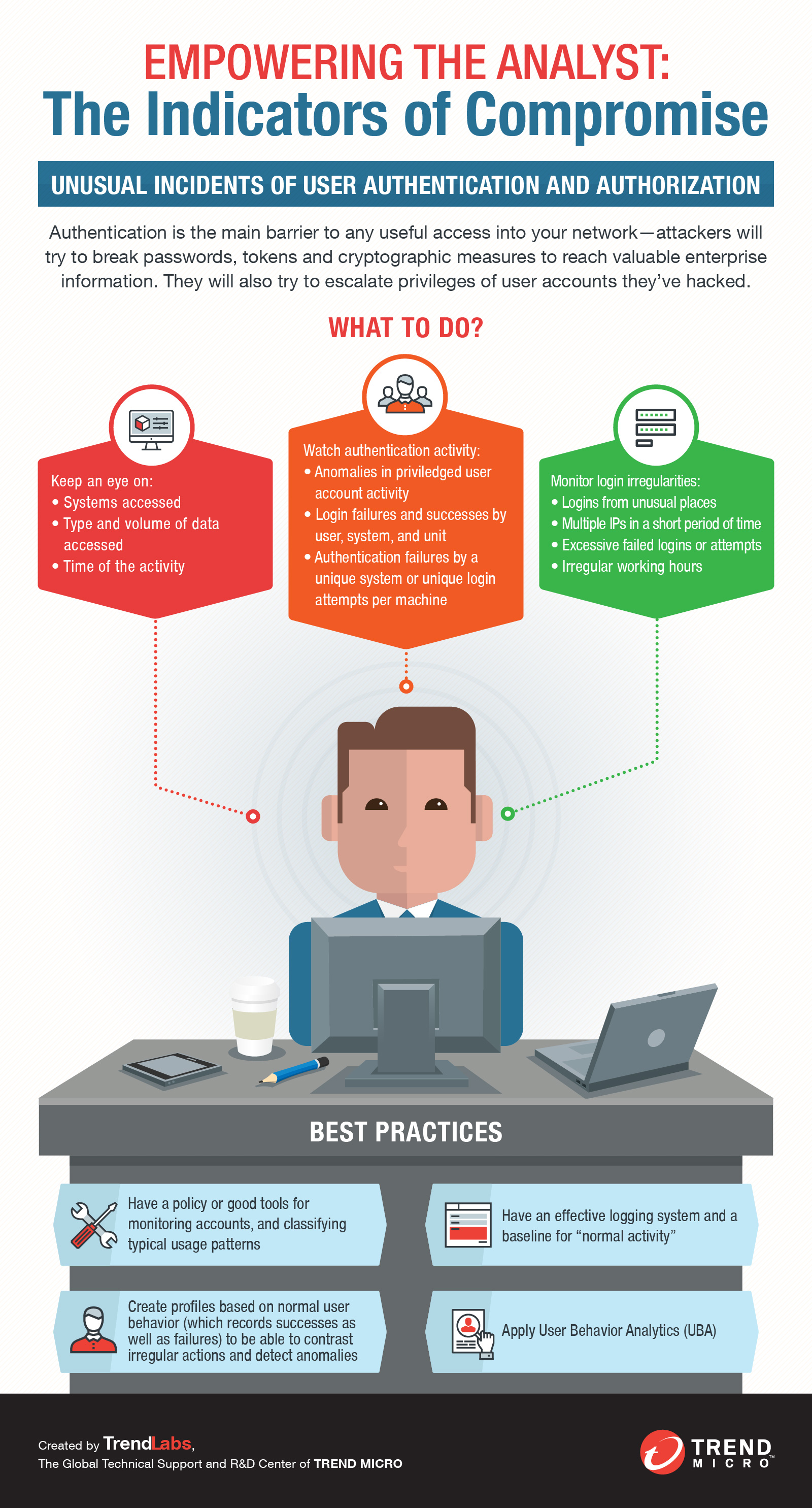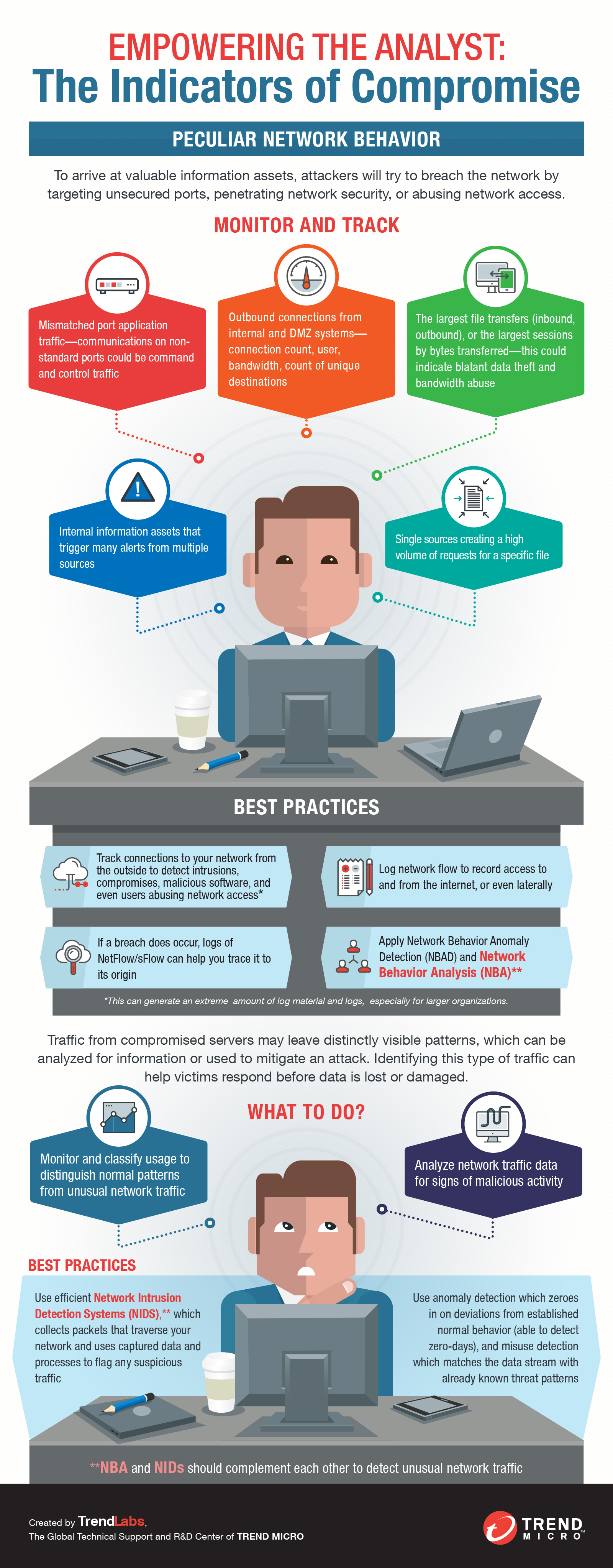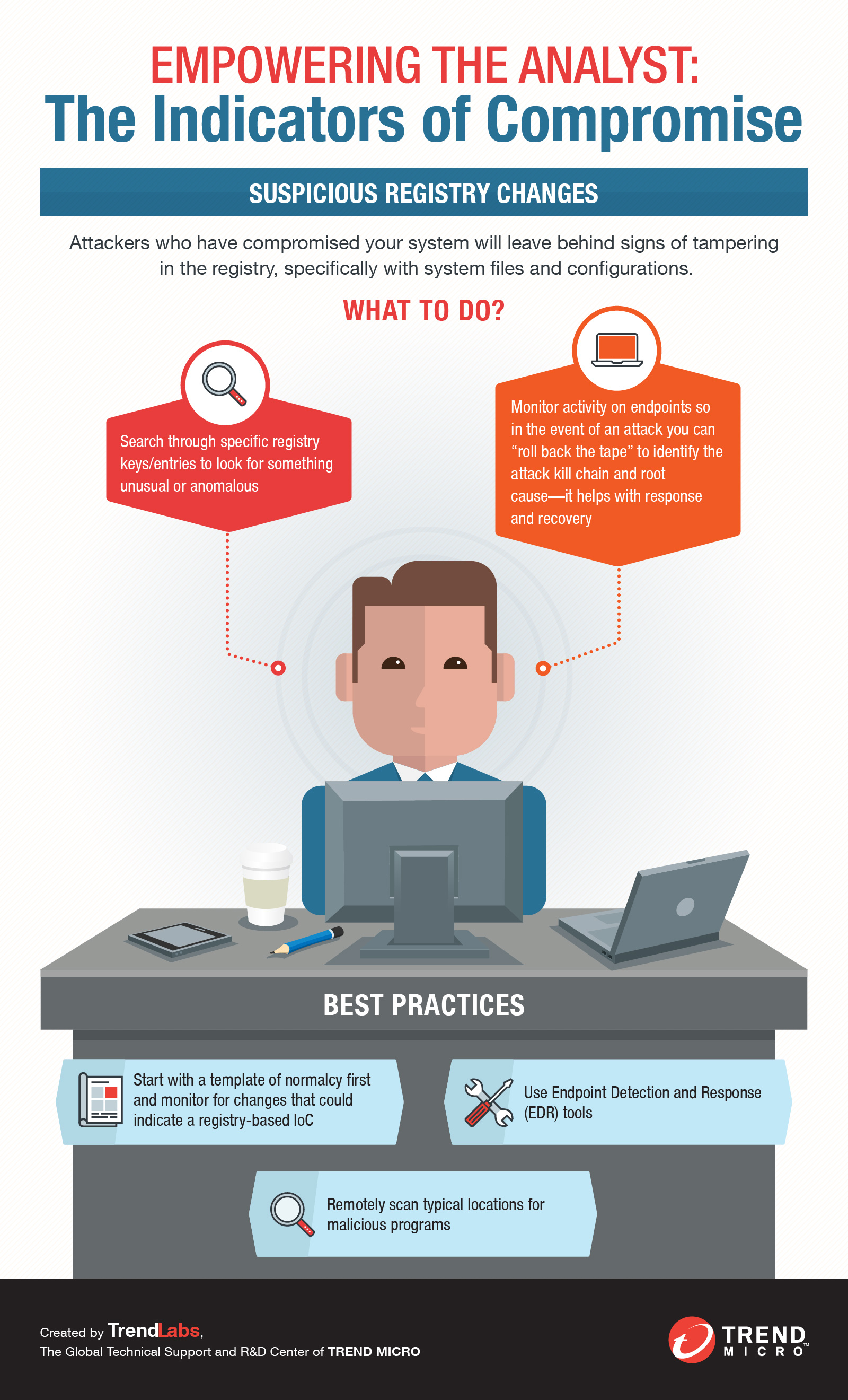Indicators of compromise
Indicators of compromise (IOCs) serve as forensic evidence of potential intrusions on a host system or network. These artifacts enable information security (InfoSec) professionals and system administrators to detect intrusion attempts or other malicious activities. Security researchers use IOCs to better analyze a particular malware’s techniques and behaviors. IOCs also provides actionable threat intelligence that can be shared within the community to further improve an organization’s incident response and remediation strategies.
?
Some of these artifacts are found on event logs and timestamped entries in the system, as well as on its applications and services. InfoSec professionals and IT/system administrators also employ various tools that monitor IOCs to help mitigate, if not prevent, breaches or attacks.
?
Here are some indicators of compromise information security professionals and system administrators watch out for:
- Unusual traffic going in and out of the network
- Unknown files, applications, and processes in the system
- Suspicious activity in administrator or privileged accounts
- Irregular activities such as traffic in countries an organization doesn’t do business with
- Dubious log-ins, access, and other network activities that indicate probing or brute force attacks
- Anomalous spikes of requests and read volume in company files
- Network traffic that traverses in unusually used ports
- Tampered file, Domain Name Servers (DNS) and registry configurations as well as changes in system settings, including those in mobile devices
- Large amounts of compressed files and data unexplainably found in locations where they shouldn’t be
Related terms:? Targeted attacks, data breach
Related papers or primers :
/vinfo/za-en/security/news/cyber-attacks/defending-against-data-breach-attacks
Related infographics :
/vinfo/us/security/news/cybercrime-and-digital-threats/empowering-the-analyst-indicators-of-compromise
Graphics :



